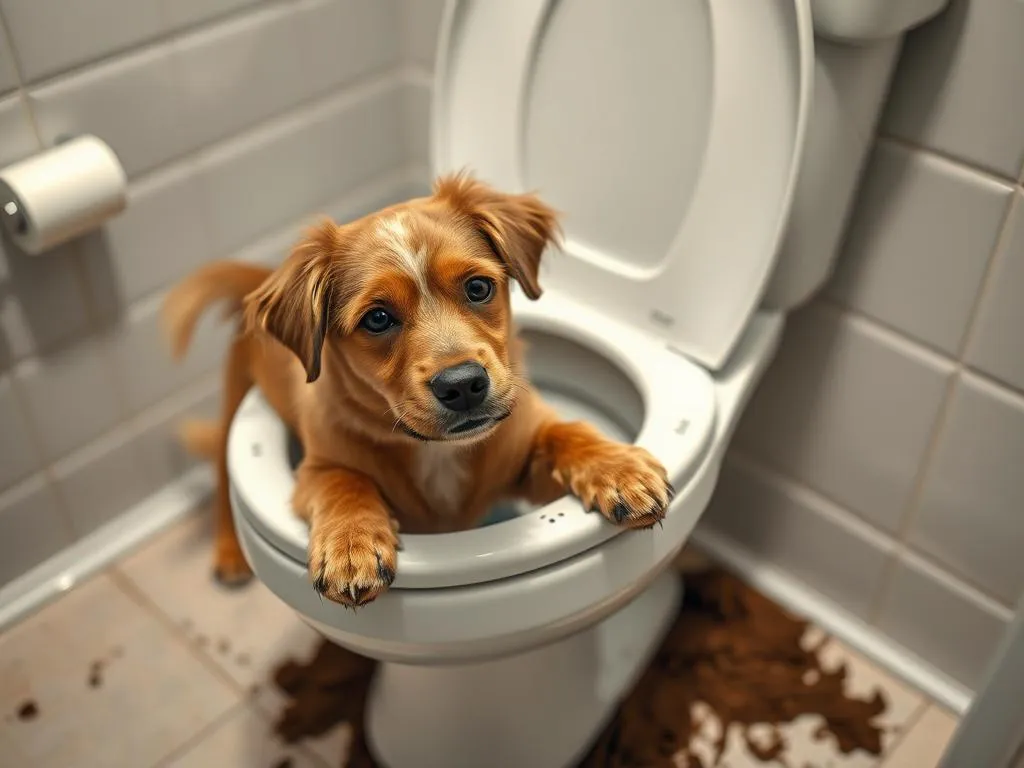
Dog ownership brings immense joy and companionship, but it also comes with a set of responsibilities, particularly when it comes to waste disposal. Many dog owners often find themselves grappling with the question: can you flush dog poop down the toilet? Understanding the appropriate disposal methods for dog waste is crucial, not only for maintaining hygiene but also for minimizing environmental impacts. This comprehensive guide delves into dog waste composition, health risks, flushing guidelines, environmental considerations, and practical tips for responsible pet ownership.
Understanding Dog Waste
Composition of Dog Poop
Dog feces is a complex mixture of components. It primarily consists of undigested food, water, bacteria, and various waste products. The specific composition can vary based on the dog’s diet, health, and breed. Understanding these biological and chemical components is crucial when considering disposal methods.
For instance, dog poop contains high levels of nitrogen, phosphorus, and other nutrients that can lead to water pollution if not disposed of correctly. This is particularly important in areas where dog waste can enter storm drains, potentially contaminating local waterways.
Health Risks Associated with Dog Waste
Dog waste can harbor a variety of pathogens and parasites, including bacteria like E. coli and Salmonella, as well as parasites such as roundworms and hookworms. These organisms pose significant health risks to both humans and other animals.
Improper disposal of dog feces can lead to the spread of these pathogens, affecting public health, especially in urban areas where dog populations are high. This emphasizes the importance of responsible waste disposal practices, ensuring that dog waste is managed in a manner that protects community health.
Flushing Dog Poop: The Basics
Is It Safe to Flush?
The question of whether it’s safe to flush dog poop down the toilet is nuanced. While many might assume that flushing is the most environmentally friendly option, there are several factors to consider.
From a plumbing perspective, flushing dog waste can lead to clogs, especially if it is not broken down properly. Dog poop is denser and bulkier than human waste, which means that it can accumulate in pipes, causing blockages. Additionally, wastewater treatment plants are primarily designed to handle human waste, and while they can process some animal waste, dog feces can complicate the treatment process.
Local Regulations and Guidelines
Local laws regarding dog waste disposal can vary significantly. In some areas, there may be specific regulations that prohibit flushing dog poop down the toilet. It’s essential for dog owners to familiarize themselves with local waste disposal guidelines to ensure compliance and promote public health.
For example, in certain municipalities, there are designated dog waste stations equipped with bags and bins specifically for this purpose, encouraging pet owners to dispose of waste in a more environmentally responsible manner.
Environmental Impact of Flushing Dog Waste
Wastewater Treatment Process
When flushing waste, it’s important to understand how wastewater treatment plants operate. These facilities are designed to process human waste, which undergoes a series of treatments to remove contaminants before being released into the environment. However, flushing dog poop can introduce additional challenges into this system.
The presence of pathogens and nutrients from dog waste can disrupt the treatment process, potentially leading to untreated waste being discharged into waterways. This can contribute to water pollution, harming aquatic ecosystems and public health.
Alternatives to Flushing
Given the potential issues associated with flushing dog waste, exploring eco-friendly alternatives is essential. One popular solution is the use of biodegradable bags. These bags are designed to break down naturally, reducing plastic waste in landfills.
Another environmentally responsible option is composting. Composting dog waste can be effective, provided it is done correctly. Special compost bins designed for dog waste can help break down feces while minimizing odors and pathogens, eventually creating nutrient-rich compost for non-food plants.
Practical Tips for Dog Owners
When You Can Flush
In instances where flushing dog poop may be acceptable, there are some guidelines to follow. If you must flush, ensure that the waste is free from plastic bags, as these can cause significant plumbing issues and do not break down in wastewater treatment systems.
Additionally, it is advisable to flush small amounts of waste at a time rather than large quantities, which could overwhelm the plumbing system.
When You Shouldn’t Flush
Conversely, there are clear situations where flushing dog poop is not advisable. Avoid flushing large volumes of waste, as this can lead to clogs in your toilet or plumbing system.
Certain types of waste, such as that from dogs with gastrointestinal issues or parasites, should never be flushed due to the health risks they pose. In these cases, it is crucial to dispose of the waste in designated trash bags and bins specifically for dog waste.
Dog Waste Disposal Products
Biodegradable Bags
Biodegradable dog waste bags have gained popularity among environmentally-conscious pet owners. These bags are made from materials that break down more quickly than traditional plastic, helping to reduce plastic pollution.
Some popular brands have developed bags that are durable and easy to use, ensuring that dog owners can clean up after their pets without contributing to environmental harm. When selecting biodegradable bags, look for certifications that verify their eco-friendliness.
Dog Waste Disposal Systems
For those seeking a more permanent solution, dog waste disposal systems, such as in-ground digesters, can be highly effective. These systems are designed to break down dog waste naturally, utilizing microorganisms to decompose the waste and minimize odors.
Such systems are easy to install and maintain, offering a convenient option for responsible dog owners. They help reduce the amount of waste that ends up in landfills while providing an effective means of disposal.
Conclusion
In summary, the question of can you flush dog poop down the toilet is complex and multifaceted. While there may be specific instances where flushing is acceptable, the potential plumbing issues and environmental impacts often outweigh the benefits.
As responsible dog owners, it is crucial to consider proper disposal methods that protect both public health and the environment. Opting for biodegradable bags, composting, or using dedicated dog waste disposal systems can significantly contribute to a cleaner and healthier community. The responsibility of maintaining hygiene and caring for the environment ultimately falls on the shoulders of dog owners, making informed choices about waste disposal increasingly vital in today’s world.









